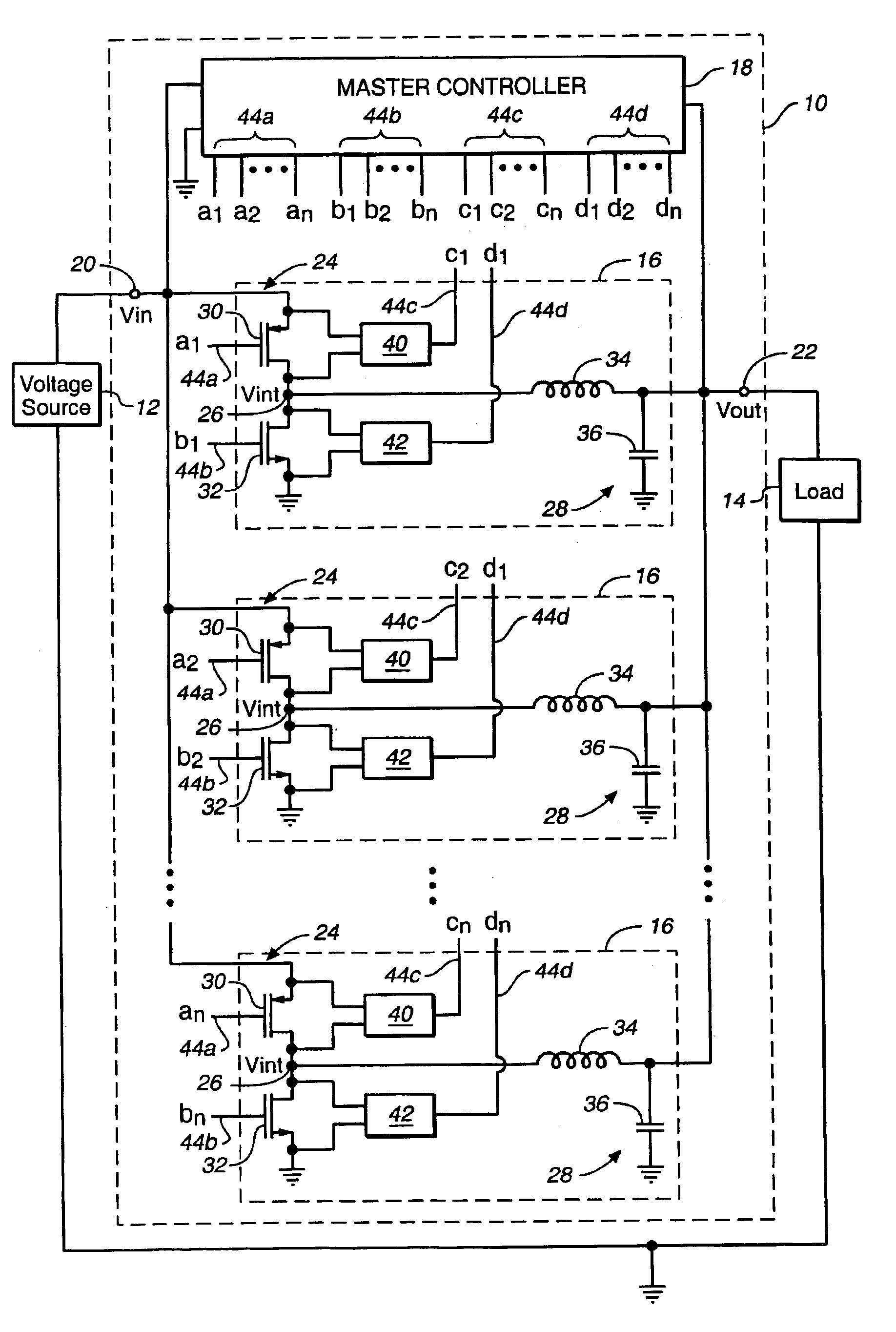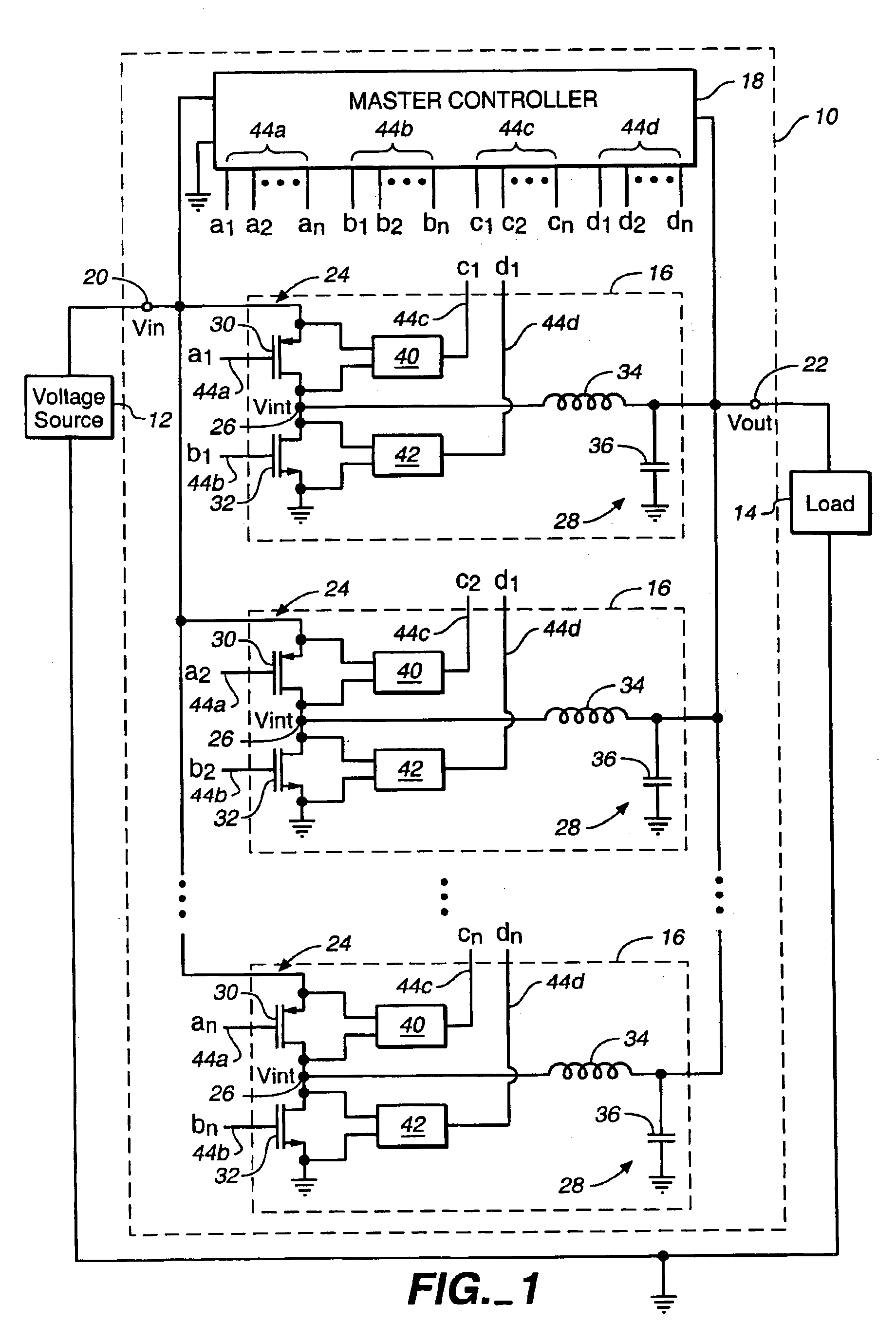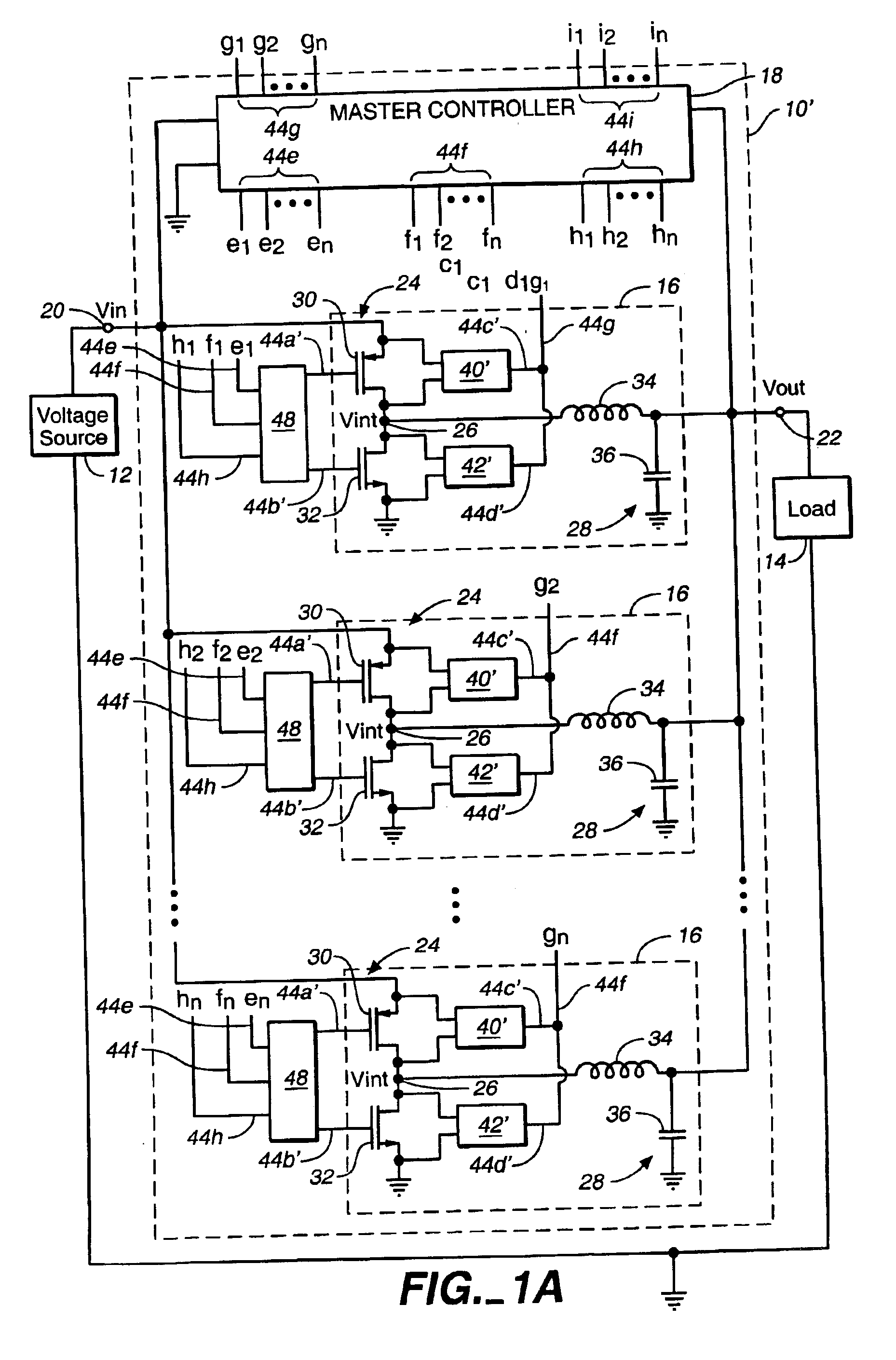Digital voltage regulator using current control
a voltage regulator and digital technology, applied in the field of voltage regulators, can solve the problems of loss of information, degraded analog signals, and expensive analog circuits, and achieve the effects of reducing current ripple, convenient form factor, and reducing the use of analog circuits
- Summary
- Abstract
- Description
- Claims
- Application Information
AI Technical Summary
Benefits of technology
Problems solved by technology
Method used
Image
Examples
Embodiment Construction
Referring to FIG. 1, a switching regulator 10 is coupled to an unregulated DC input voltage source 12, such as a battery, by an input terminal 20. The switching regulator 10 is also coupled to a load 14, such as an integrated circuit, by an output terminal 22. The load 14 typically has an expected nominal voltage Vnom and a voltage tolerance ΔVnom. A typical nominal voltage Vnom for a microprocessor chip is about 1.0 to 5.0 volts, e.g., about 1.2 to 1.8 volts, and a typical voltage tolerance ΔVnom is + / −6% of the nominal voltage Vnom, i.e., about 80 mV for a 1.2 volt nominal voltage. The switching regulator 10 serves as a DC-to-DC converter between the input terminal 20 and the output terminal 22. The switching regulator 10 includes one or more slaves 16 for converting an input voltage Vin at the input terminal 20 to an output voltage Vout at the output terminal 22 which is within the tolerance ΔVnom of the nominal voltage Vnom, and a master controller 18 for controlling the operati...
PUM
 Login to View More
Login to View More Abstract
Description
Claims
Application Information
 Login to View More
Login to View More - R&D
- Intellectual Property
- Life Sciences
- Materials
- Tech Scout
- Unparalleled Data Quality
- Higher Quality Content
- 60% Fewer Hallucinations
Browse by: Latest US Patents, China's latest patents, Technical Efficacy Thesaurus, Application Domain, Technology Topic, Popular Technical Reports.
© 2025 PatSnap. All rights reserved.Legal|Privacy policy|Modern Slavery Act Transparency Statement|Sitemap|About US| Contact US: help@patsnap.com



